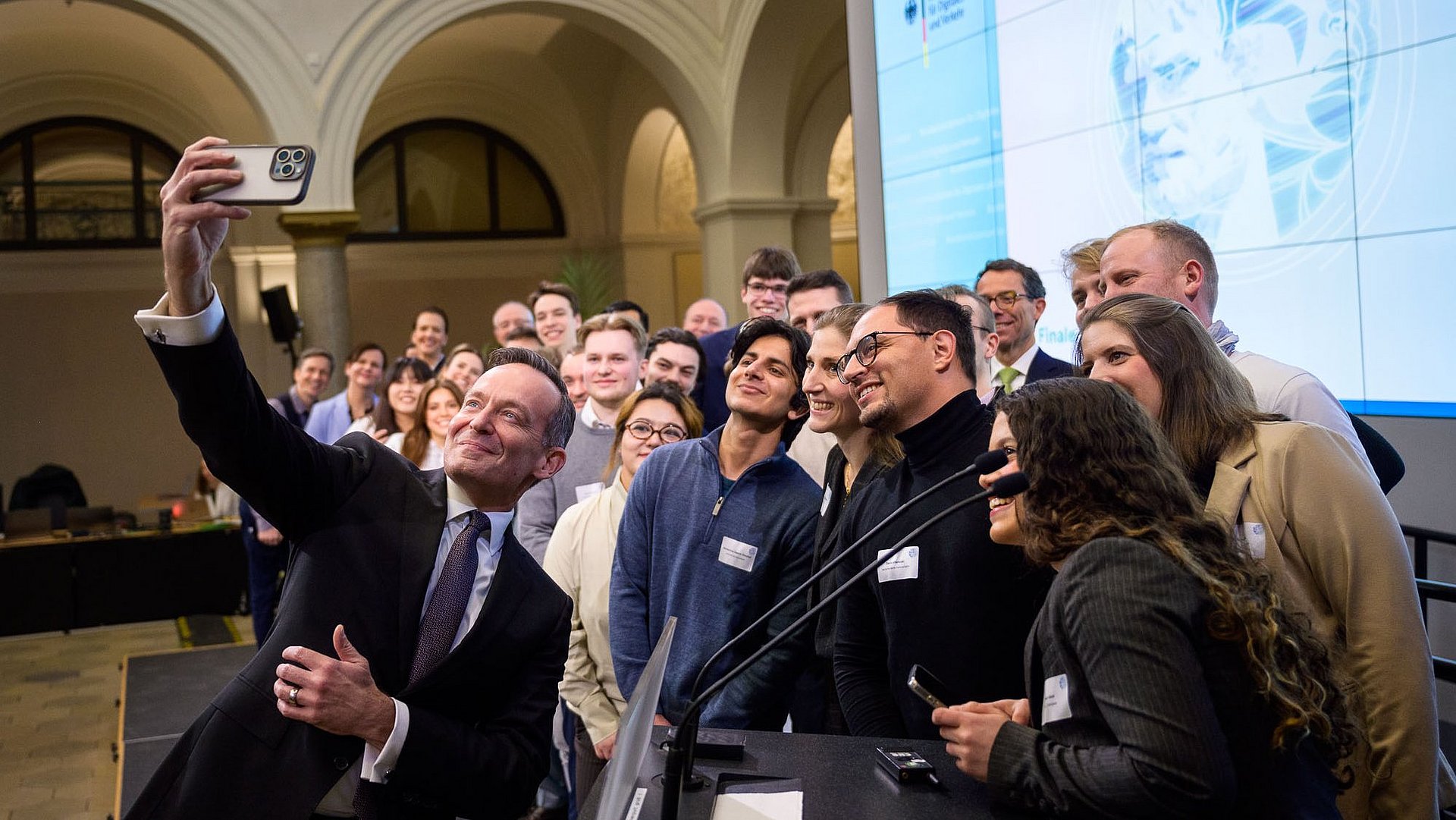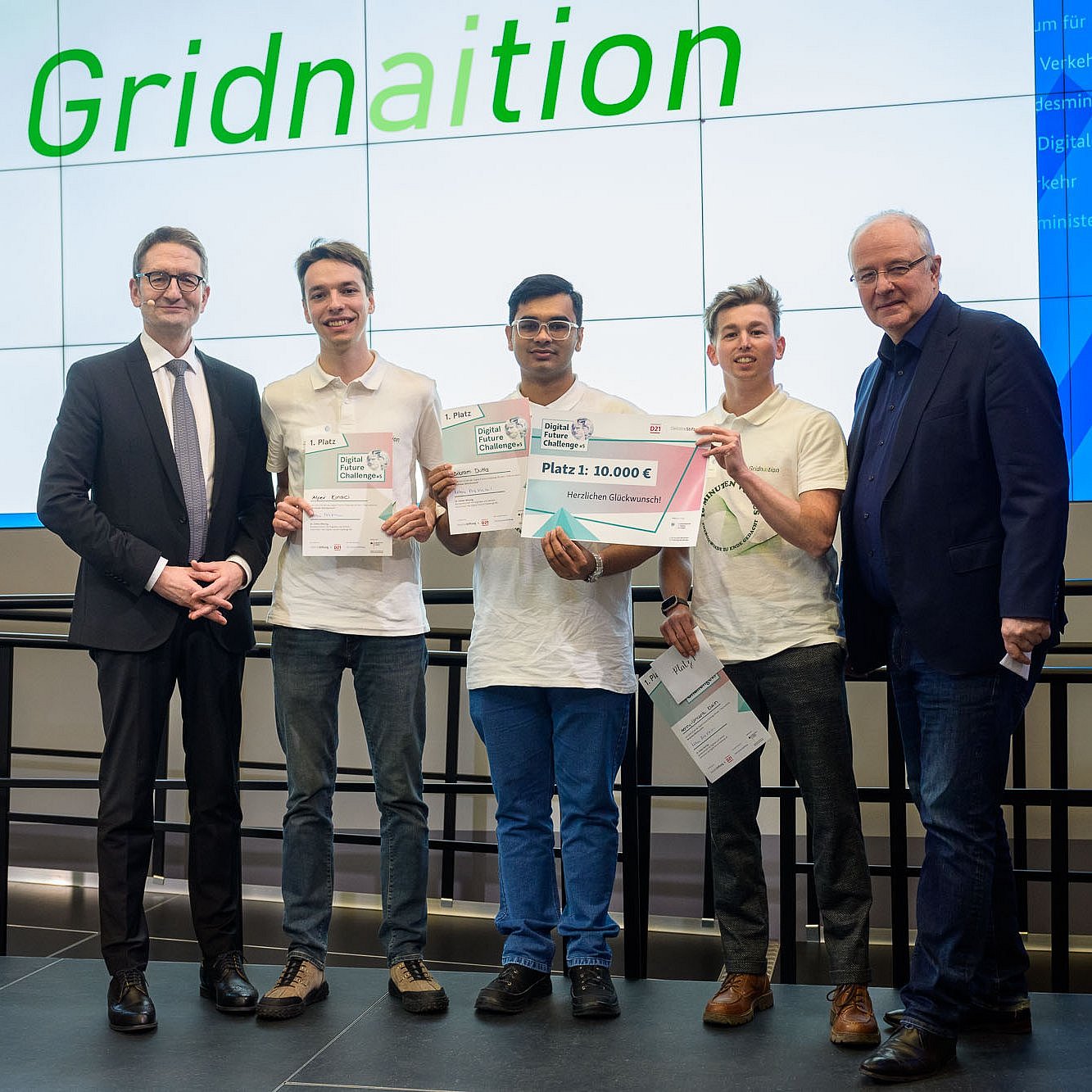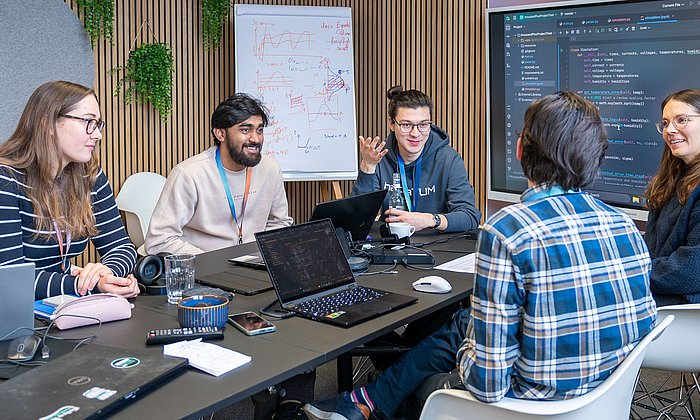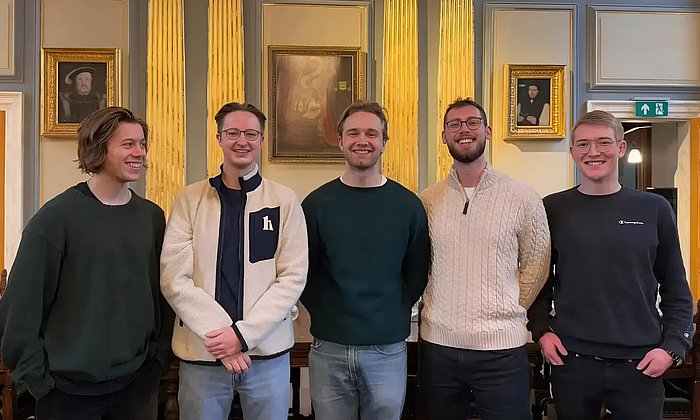TUM teams take first and third place in the Digital Future Challenge 2025
Digitization serving society

Technical innovativeness, a speedier digitization process, targeted AI applications - we need all of these if we want to overcome the challenges of today and remain competitive. But technology is not an end in itself, as the patron of the Digital Future Challenge, Federal Minister for Digital and Transport Volker Wissing, emphasized at the finale at the ministry: “It is important that these things are developed based on a set of values that always puts people and human dignity front and center.”
Improving people’s everyday lives
This is the aim of the entire competition: to develop creative technical solutions that offer more than just economic added value and quite tangibly improve people’s everyday lives. The fifth edition of the Digital Future Challenge focused on specific use cases submitted by institutions and corporate partners such as Telekom, BMW, or the Berliner Verkehrsbetriebe.
In the categories “Europe,” “Climate & Environment,” and “Inclusion,” a total of 72 student teams from universities all across Germany developed solutions to harness the potential of digital technologies for society, be it to improve mental health, sustainable urban development, or access to education.
Three out of five final teams with TUM participation
Five teams made it to the final with their concepts, three of which involved TUM students. Two of them made it to the podium. Third place went to “HorizonRail”. The team worked on a Deutsche Bahn use case: the application of intelligent video sensor technology in long-distance trains in an equally practically feasible and ethically sound manner. The four TUM students developed a video sensor prototype that uses its own AI software to automatically detect emergencies and inform the train crew about them – and is fully compliant with data protection regulations thanks to the short storage period.
And ahead of the “Luftblick” team from Wedel University of Applied Sciences, “Gridnaition,” a joint team of students from TUM and LMU, took first place. They worked on the use case of the Deutsche Bundesstiftung Umwelt, which aims to strengthen the power grid’s resilience. The approach with which “Gridnaition” convinced the jury: using AI forecasts to overcome the thermal inertia of heat engines. In this way, district heating networks can become power-to-heat-to-power electricity storage systems, making an important contribution to ensuring the energy transition’s success.
The concepts for “HorizonRail” and “Gridnaition” emerged from the seminars “sustAInability”, offered jointly by the Munich School of Politics and Public Policy at TUM and the Munich Center for Digital Sciences and AI at Munich University of Applied Sciences, and “CDR: Digital Future Challenge – Responsible AI” by TUM’s Chair of Law and Security in Digital Transformation. Like the Digital Future Challenge itself, these aim to combine artificial intelligence and sustainability to create new solutions for the benefit of society.
Technical University of Munich
- Konstantin Götschel – TUM CST Communications
- konstantin.goetschel@tum.de



